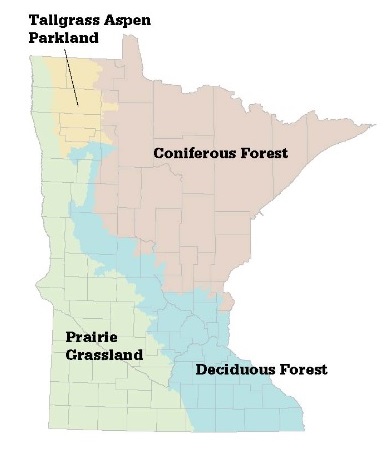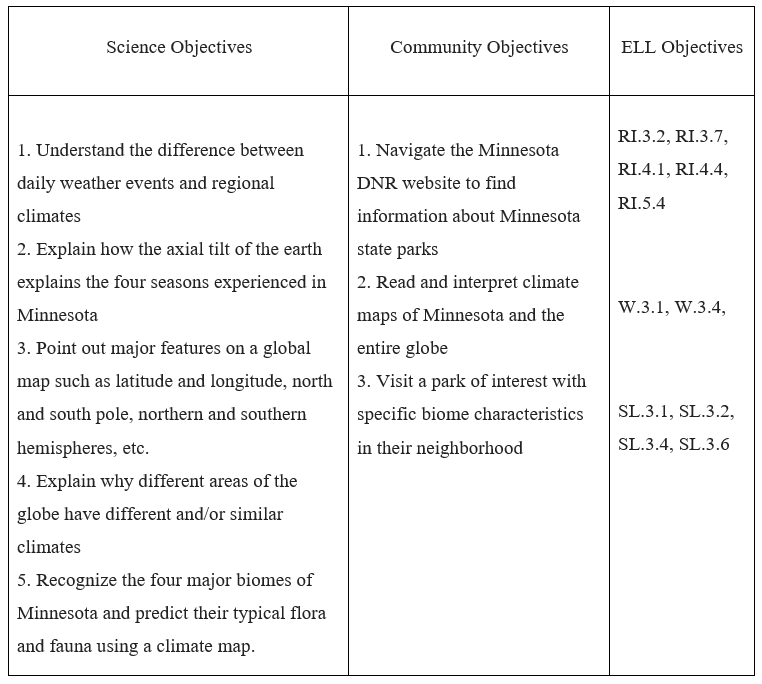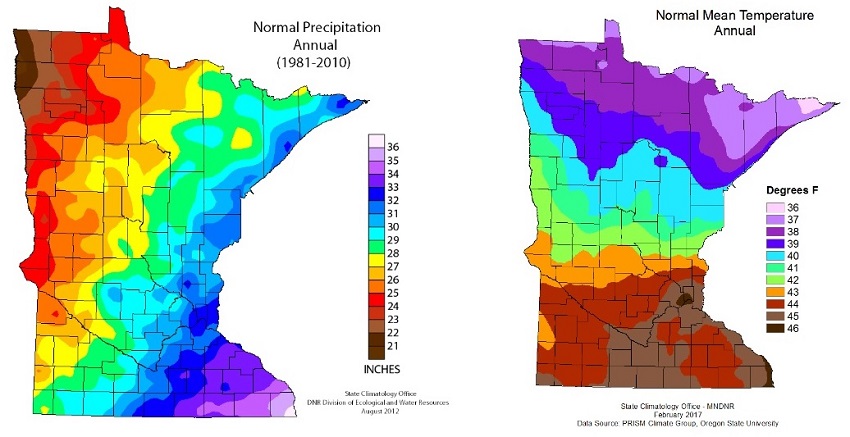- MN ABE Connect
- Archive
- Teaching Minnesota’s Natural History in an EL Classroom
 September 26, 2022
September 26, 2022
Teaching Minnesota’s Natural History in an EL Classroom
Lucas Rapisarda, NFNM Program DirectorHumans are inherently curious; we ask questions about everything. When we see something in nature, we wonder why, how, and where; we are all observers, and thus we are all scientists. However, the formal learning of science in classrooms can cast doubt on our own abilities or intimidate us with big words. Scientific terminology is difficult for learners whose first language is English and can be a huge challenge for EL (English Language) students.
The science classroom is infamous for its use of complex, content-specific words that often borrow terms from everyday English: cultures, galls, and moles all mean different things to microbiologists, botanists, and chemists, let alone the average newcomer to the language. In their 2010 book, Foundations for Teaching English Learners, Dr. Wayne Wright articulates this fact:
“English language learners face a triple challenge during science instruction. They must learn everyday vocabulary, content-specific vocabulary, and the language structures that are used when engaged in inquiry… the language of science can be confusing for English language learners because it uses many words from everyday life that have different meanings.”
 New science modules for ELLs
New science modules for ELLs
Nature for New Minnesotans (NFNM) is a University of Minnesota extension program committed to developing lessons for adult EL students that address these challenges. The program, which began in the fall of 2021, is developing modules that focus on the natural history of Minnesota and many of its outdoor activities. Each module contains relevant vocabulary, leveled readings, hands-on activities, and recommended extension activities. Additionally, each module contains a lesson sequence that culminates in a series of recommended outdoor experiences; in part 1 of this article series, we heard about Literacy Minnesota’s culminating experience camping at Itasca State Park.
While these modules were originally designed for intermediate and advanced EL students, they can be adapted for classrooms based on English understanding. Additionally, many of the topics discussed in these modules are found regularly in the science GED reading section. For the remainder of this article, we will dive deeper into one of these modules that you can use with your students!
Module: Climates, Seasons, & Biomes
Purpose: To explore how Minnesota’s climate and biomes are influenced by changes in season, and how that impacts the types of plants and animals that we see across the state.
Module Objectives

Each module contains science specific, community, and ELL objectives. The science goals are specific to Minnesota’s natural history and cover topics as wide-ranging as axial tilt of the Earth to specific types of fish that live in the state. The community objectives address barriers of access to the outdoors for ELL communities and often are linked to a culminating experience involving the practice of digital literacy and communication skills. The ELL objectives are based on College and Career Readiness standards.

Classroom objectives, while important, cannot capture the full scope of learning experiences in a classroom. As teachers, we know that conversation skills, public speaking, and critical thinking, among others, all manifest organically in class spaces.
In the process of teaching Climates, Seasons, & Biomes, I watched students make connections between global climate maps and skin tone, which led us to discuss melanin and human evolution. A student confided in their teacher that after learning about axial tilt, they had the confidence to share what they learned with their 14-year-old niece. As students developed an understanding of biomes, it made them curious about seeing these spaces in person. This desire created greater excitement around culminating experiences, which drove engagement in learning more about the Minnesota Department of Natural Resources and how to navigate their reservation website.
While none of these stories directly covered a listed objective, they speak to the power of place-based, experiential science learning. In this way, we can use nature education, specifically the natural history of Minnesota, as a vehicle to build scientific vocabulary, conversation skills, and critical thinking.
Check out the sample module for Climates, Seasons, & Biomes here.
Additional NFNM modules, materials, and workshops
Nature for New Minnesotans is a project funded by the Environmental Natural Resource Trust Fund of Minnesota, with the intention of making all completed modules public by June 2024.
Educators interested in learning more about the project, obtaining student-facing materials, or participating in upcoming workshops during the summer of 2023, can fill out this Google form.
References
Wright, Wayne E. (2010). Foundations for Teaching English Language Learners: Research, Theory, Policy, and Practice. Philadelphia, PA: Caslon Publishing.

Newsletter Signup
Get MN ABE Connect—the official source for ABE events, activities, and resources!
Sign UpArticle Categories
- ABE Foundations/Staff Onboarding
- ACES/Transitions
- Adult Career Pathways
- Assessment
- CCR Standards
- Citizenship
- COVID-19
- Cultural Competency
- Digital Literacy/Northstar
- Disabilities
- Distance Learning/Education
- ELA
- Equity/Inclusion
- ESL
- HSE/Adult Diploma
- Listening
- Math/Numeracy
- Mental Health
- Minnesota ABE
- One-Room Schoolhouse/Multilevel
- Professional Development
- Program Management
- Reading
- Remote Instruction
- Science
- Social Studies
- Speaking/Conversation
- Support Services
- Teaching Strategies
- Technology
- Uncategorized
- Volunteers/Tutors
- Writing